The Wrack
The Wrack is the Wells Reserve blog, our collective logbook on the web.
The Wrack is the Wells Reserve blog, our collective logbook on the web.
 My tight-timeframe Wednesday birding routine started in March and carried on through December. Over that span I missed 7 mid-week morning appointments with the birds, but still completed 33 checklists accounting for 61 species.
My tight-timeframe Wednesday birding routine started in March and carried on through December. Over that span I missed 7 mid-week morning appointments with the birds, but still completed 33 checklists accounting for 61 species.
Starlings were evident on 20 surveys, crows turned up on 19, and a handful of species appeared 11 times: robin, bluebird, a sparrow, and goldfinch.
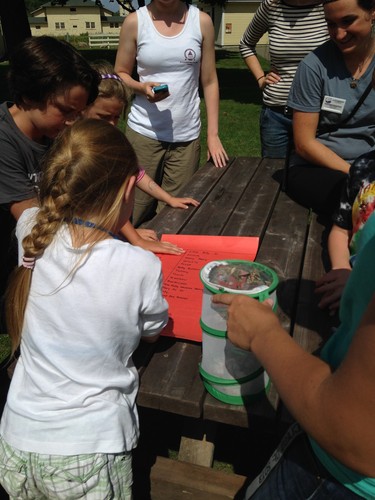 It’s not every day you meet a butterfly named Sargent Buck. Similarly, it isn’t too common to come across a butterfly named Colonel Adams. However, if you should happen to visit the Wells Reserve in the next few days, you might just get the chance.
It’s not every day you meet a butterfly named Sargent Buck. Similarly, it isn’t too common to come across a butterfly named Colonel Adams. However, if you should happen to visit the Wells Reserve in the next few days, you might just get the chance.
Last Monday, Kate brought in 26 Painted Lady chrysalises, which were pinned to the top of a small netted enclosure and left to hatch in the Teaching Lab. Though not explicitly related to the theme, the butterflies became an integral and exciting part of last week’s Seashore Sleuths camp. That day, we ogled as the chrysalises shook in anticipation of their next transformation.
A scissor-tailed flycatcher spends a few hours along the Muskie Trail.
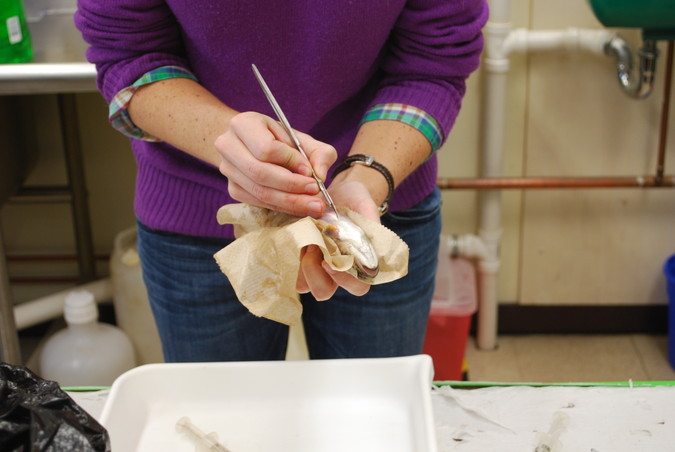 In his recent post, Spreading the Fish Ladder News, Jake mentioned our imminent use of passive integrated transponders, or PIT tags, to track fish. But just what is a PIT tag and exactly how does it work?
In his recent post, Spreading the Fish Ladder News, Jake mentioned our imminent use of passive integrated transponders, or PIT tags, to track fish. But just what is a PIT tag and exactly how does it work?
A passive integrated transponder is a miniature electronic circuit typically encased in glass and implanted under an animal's skin or in a body cavity (the fish tags we'll use are thin and just 12mm long). Each tag is programmed with a unique number to identify an individual animal. That number is read automatically when the animal travels close to a receiving station.
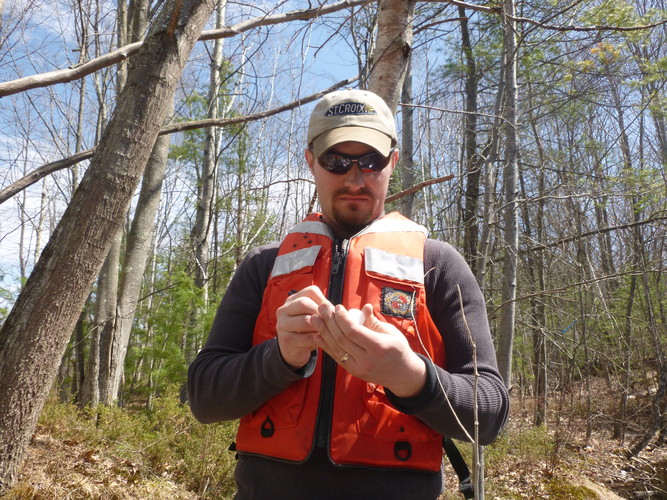 Last week, UMaine Ph.D. candidate Jared Homola and postdoctoral fellow Dr. Krista Capps visited three vernal pools at the reserve as part of Jared's research into how urbanization affects vernal pools and influences the organisms within them. He is especially interested in how abrupt climate change can impact the persistence of ecologically important species and the genetic basis for the ecosystem services they provide.
Last week, UMaine Ph.D. candidate Jared Homola and postdoctoral fellow Dr. Krista Capps visited three vernal pools at the reserve as part of Jared's research into how urbanization affects vernal pools and influences the organisms within them. He is especially interested in how abrupt climate change can impact the persistence of ecologically important species and the genetic basis for the ecosystem services they provide.
Mornings, driving in, Laudholm welcomes me. I loop in to park, take two bags in one hand and binoculars in the other, step out, push the car door shut, and lock it. Already I'm attuned, scanning, panning the landscape, listening for caws and chips.
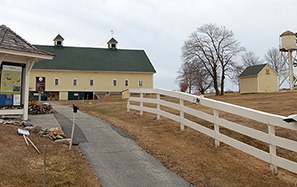 Most days I'm rewarded. It's a long walk from the parking lot to the farmhouse door and the reserve is famously rich in bird life. With its grassy expanses, ancient hedgerows, mixed woodlands, and the estuaries just beyond them, it's a rare day when no bird moves or speaks during the pedestrian part of my commute.
Most days I'm rewarded. It's a long walk from the parking lot to the farmhouse door and the reserve is famously rich in bird life. With its grassy expanses, ancient hedgerows, mixed woodlands, and the estuaries just beyond them, it's a rare day when no bird moves or speaks during the pedestrian part of my commute.
Four weeks ago, I added a twist to my routine. Every Wednesday, I'd measure my walk — both length and time — while logging each avian encounter. Then I'd submit my checklist to eBird, where it can be stored and shared.
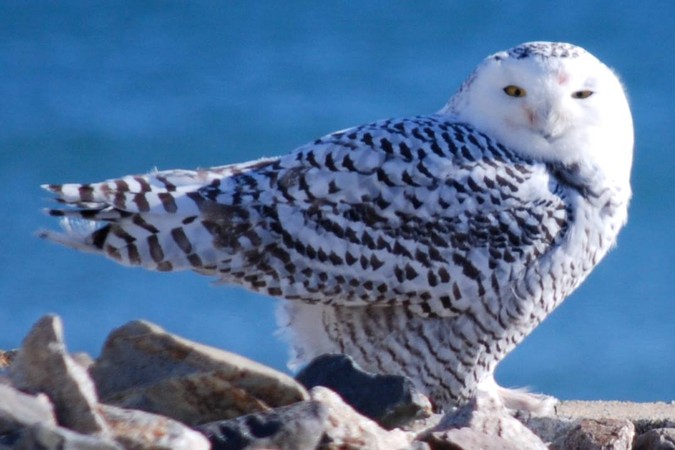
Snowy Owl. You don't need to be a binocular-toting bird nut to bring this beast to the mind's eye. With the words come the impression: Big, white, stately, broad-faced, and with piercing yellow eyes. Awesome.
We're lucky in Maine. Snowies appear here just about annually. But this winter is something special.
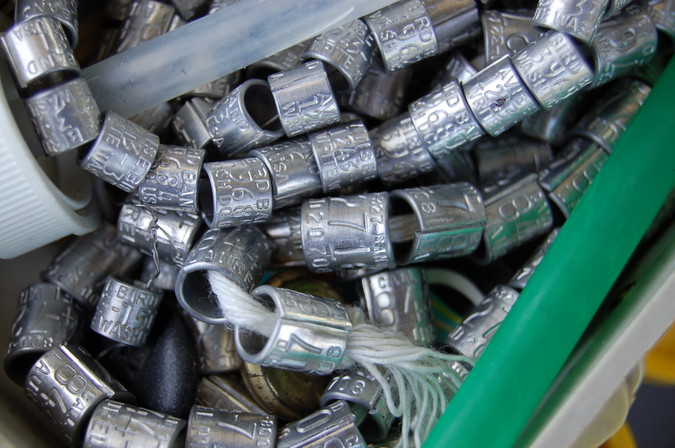 Master bird bander June Ficker and her crew wrapped up the summer season at the end of August. June recently shared her summer wrap-up and we're happy to pass along these facts and highlights for 2013…
Master bird bander June Ficker and her crew wrapped up the summer season at the end of August. June recently shared her summer wrap-up and we're happy to pass along these facts and highlights for 2013…
This past Saturday evening, over 20 community members participated in the "Bats: Friends of the Evening Sky" program offered in partnership with the Center for Wildlife. We all learned about the many myths surrounding bats and the real truths (they don't fly into human hair, there are only 3 species of vampire bats among the over 1,200 species of bats worldwide, and vampire bats do not live in the United States—they live in tropical climates and prey primarily on livestock). 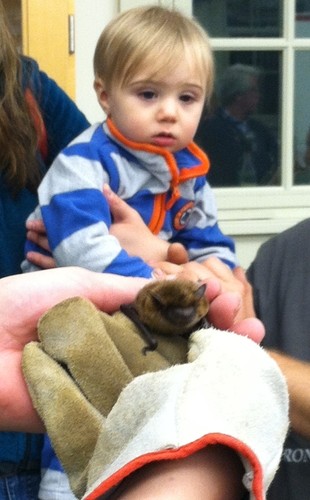
We were amazed to learn, too, that Maine's insectivorous bats eat 1,000 mosquitoes in a single night! The next time a mosquito bites you, think of all the mosquito control bats provide us!